* Please note this list has how been superseded by the one on the Best Albums of the Years page *
And here, bringing 2015 to a truly glorious end, is the conclusion of my countdown of the year’s best albums.
20 | James Newton Howard – The Hunger Games: Mockingjay Part 2 (Original Motion Picture Soundtrack)
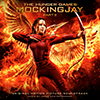 The Hunger Games film series has always been more about people and relationships than mere action, and James Newton Howard has consistently mirrored that in his scores. For the final film in the story, Howard gets archetypal, his score working as well as it does by juxtaposing crushingly imposing climaxes, reinforced by massive bass underpinning, with delicate folk music elements that (echoing the film) powerfully intimate the fragility of each and every one of the lives lost or threatened. Soaringly beautiful, solemn, spine-chilling, epic: a fitting accompaniment for the finale of one of cinema’s more emotionally involving franchises of recent years. [Amazon]
The Hunger Games film series has always been more about people and relationships than mere action, and James Newton Howard has consistently mirrored that in his scores. For the final film in the story, Howard gets archetypal, his score working as well as it does by juxtaposing crushingly imposing climaxes, reinforced by massive bass underpinning, with delicate folk music elements that (echoing the film) powerfully intimate the fragility of each and every one of the lives lost or threatened. Soaringly beautiful, solemn, spine-chilling, epic: a fitting accompaniment for the finale of one of cinema’s more emotionally involving franchises of recent years. [Amazon]
19 | Line Katcho – Pulsions
 Québécoise composer Line Katcho speaks of using sound in her work “as kinetic matter, representing movement, forces and gestures”, and that’s abundantly clear throughout the five pieces on Pulsions. Their acousmatic nature is characterised by sounds that often fall just beyond one’s reach of recognition, Katcho whipping and spinning these sounds such that they become like gusts of wind manifested as solid objects. These are in turn sliced and fragmented into huge swirling clouds of sharp-edged matter, penetrating a variety of pitched materials, including deep bass drones and undulating sheets of consonance. Captivating and magical. [Kohlenstoff]
Québécoise composer Line Katcho speaks of using sound in her work “as kinetic matter, representing movement, forces and gestures”, and that’s abundantly clear throughout the five pieces on Pulsions. Their acousmatic nature is characterised by sounds that often fall just beyond one’s reach of recognition, Katcho whipping and spinning these sounds such that they become like gusts of wind manifested as solid objects. These are in turn sliced and fragmented into huge swirling clouds of sharp-edged matter, penetrating a variety of pitched materials, including deep bass drones and undulating sheets of consonance. Captivating and magical. [Kohlenstoff]
18 | Julia Holter – Have You In My Wilderness
 It’s three years since Holter’s superb second album Ekstasis (one of my Best Albums of 2012), an album that drew liberally on musical manners from an earlier time, which is also a defining feature of Have You In My Wilderness. One detects backward glances to the lyrical mindset of a figure like Bacharach, particularly in album opener ‘Feel You’ (which could almost be a 21st century render of a number from the ’60s), as well as permeating the jaunty melody of ‘Silhouette’ (until the wonderful point where it structurally breaks apart, unleashing a host of strings) and the lush accompaniment surrounding Holter in ‘Night Song’. But discrete points of influence are numerous and treated extremely fluidly, jazz and improv jostling with ballad and baroque pop elements. An air of wonder pervades throughout, as present in the palpable sense of joy that arises from Holter’s unexpected arrangements as it is in her lyrics. [Amazon]
It’s three years since Holter’s superb second album Ekstasis (one of my Best Albums of 2012), an album that drew liberally on musical manners from an earlier time, which is also a defining feature of Have You In My Wilderness. One detects backward glances to the lyrical mindset of a figure like Bacharach, particularly in album opener ‘Feel You’ (which could almost be a 21st century render of a number from the ’60s), as well as permeating the jaunty melody of ‘Silhouette’ (until the wonderful point where it structurally breaks apart, unleashing a host of strings) and the lush accompaniment surrounding Holter in ‘Night Song’. But discrete points of influence are numerous and treated extremely fluidly, jazz and improv jostling with ballad and baroque pop elements. An air of wonder pervades throughout, as present in the palpable sense of joy that arises from Holter’s unexpected arrangements as it is in her lyrics. [Amazon]
17 | Anna Thorvaldsdottir – In the Light of Air
 “The latest CD from Icelandic composer Anna Thorvaldsdottir, In the Light of Air (out on Sono Luminus), develops further her distinctly elemental approach to music. Here, we’re immediately plunged into a primitive, even primeval place, filled with sounds at once inchoate yet at the same time stylised, producing a kind of heightened, ritualistic tone. Things move, yet for the longest time everything seems essentially static, held in check by its own oppressive weight; but, heralded by twangs on deep piano strings, Thorvaldsdottir conjures up an atmosphere like folk music waking up, underpinned by some unstable drones and enriched by a movement away from gesture towards melody. […] In the Light of Air‘s conclusion bears similarities to its opening, yet is quite transformed, still decidedly weird but fundamentally more stable. Once again, with characteristic economy of means, Thorvaldsdottir has created a stunningly immersive soundworld, the music of which conveys perceptible threads of narrative, yet which remains resolutely strange. This is perhaps her most primordial music to date, and it’s extremely impressive…” (reviewed in October) [Presto Classical]
“The latest CD from Icelandic composer Anna Thorvaldsdottir, In the Light of Air (out on Sono Luminus), develops further her distinctly elemental approach to music. Here, we’re immediately plunged into a primitive, even primeval place, filled with sounds at once inchoate yet at the same time stylised, producing a kind of heightened, ritualistic tone. Things move, yet for the longest time everything seems essentially static, held in check by its own oppressive weight; but, heralded by twangs on deep piano strings, Thorvaldsdottir conjures up an atmosphere like folk music waking up, underpinned by some unstable drones and enriched by a movement away from gesture towards melody. […] In the Light of Air‘s conclusion bears similarities to its opening, yet is quite transformed, still decidedly weird but fundamentally more stable. Once again, with characteristic economy of means, Thorvaldsdottir has created a stunningly immersive soundworld, the music of which conveys perceptible threads of narrative, yet which remains resolutely strange. This is perhaps her most primordial music to date, and it’s extremely impressive…” (reviewed in October) [Presto Classical]
16 | Man Without Country – Maximum Entropy
 Surely contemporary pop’s most forward-looking and exhilarating synthpop duo, Man Without Country have somehow managed here to top their sublime 2012 debut, Foe. Sensitivity has always been pivotal to their music, a potent human presence balancing out the electronics, along with a leaning (it would be overdoing it to call it more than that) toward hints of the soundworld of their ’80s predecessors. Tracks like ‘Laws of Motion’, a delicious duet with White Sea’s Morgan Kibby, and ‘Virga’ demonstrate how subtle is their handling in this respect; one feels distant memories being triggered yet everything is fresh and new, making for a complex aural result. Ryan James’ vocals are as breathily ambiguous as ever, pushing the lyrics into a middleground of expressive potential, and the duo don’t seem to be anywhere near to using up their gift for lyrical ingenuity. [Amazon]
Surely contemporary pop’s most forward-looking and exhilarating synthpop duo, Man Without Country have somehow managed here to top their sublime 2012 debut, Foe. Sensitivity has always been pivotal to their music, a potent human presence balancing out the electronics, along with a leaning (it would be overdoing it to call it more than that) toward hints of the soundworld of their ’80s predecessors. Tracks like ‘Laws of Motion’, a delicious duet with White Sea’s Morgan Kibby, and ‘Virga’ demonstrate how subtle is their handling in this respect; one feels distant memories being triggered yet everything is fresh and new, making for a complex aural result. Ryan James’ vocals are as breathily ambiguous as ever, pushing the lyrics into a middleground of expressive potential, and the duo don’t seem to be anywhere near to using up their gift for lyrical ingenuity. [Amazon]
15 | C Duncan – Architect
 You really don’t see music like this coming. Christopher Duncan’s approach to songwriting taps into a musical equivalent of summer holiday polaroids from the 1970s. Far from sounding merely like a retro throwback, his songs are homages to a kind of folk simplicity, inhabiting a dreamlike world of technicolor cheerfulness and harmony. One of the things that’s so remarkable about Duncan’s music is how it never feels remotely twee (despite how i’ve just described it), and also—considering how its composer wasn’t even born until 1989—how authentically it speaks. There’s a decidedly wistful punch being packed here, Duncan’s captivating voice emerging like a pristine artefact from the past that you’d thought was lost many, many years ago. Gorgeous. [FatCat Records]
You really don’t see music like this coming. Christopher Duncan’s approach to songwriting taps into a musical equivalent of summer holiday polaroids from the 1970s. Far from sounding merely like a retro throwback, his songs are homages to a kind of folk simplicity, inhabiting a dreamlike world of technicolor cheerfulness and harmony. One of the things that’s so remarkable about Duncan’s music is how it never feels remotely twee (despite how i’ve just described it), and also—considering how its composer wasn’t even born until 1989—how authentically it speaks. There’s a decidedly wistful punch being packed here, Duncan’s captivating voice emerging like a pristine artefact from the past that you’d thought was lost many, many years ago. Gorgeous. [FatCat Records]
14 | Jacek Sienkiewicz – Nomatter
 Warsaw musician Jacek Sienkiewicz came to electronic music via the worlds of house and techno (he was a DJ in the ’90s), but over the years has evolved to the point where an album like this can emerge. Beats have been sublimated; one feels their influence in the way Sienkiewicz’s textures are propelled onwards, and indeed one glimpses palimpsest-like traces of their presence, burbling beneath the surface of the canvas and, just occasionally, bursting through. But these are altogether more complex, difficult-to-parse textures, their hard edges eroded by layers of more mellifluous ambient cloudfronts into stylistically strange, arresting concoctions. [No.]
Warsaw musician Jacek Sienkiewicz came to electronic music via the worlds of house and techno (he was a DJ in the ’90s), but over the years has evolved to the point where an album like this can emerge. Beats have been sublimated; one feels their influence in the way Sienkiewicz’s textures are propelled onwards, and indeed one glimpses palimpsest-like traces of their presence, burbling beneath the surface of the canvas and, just occasionally, bursting through. But these are altogether more complex, difficult-to-parse textures, their hard edges eroded by layers of more mellifluous ambient cloudfronts into stylistically strange, arresting concoctions. [No.]
13 | Brian Gascoigne – Phase IV (Original Motion Picture Soundtrack)
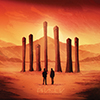 Despite the stupid decision only to make this available on vinyl, the fact that Brian Gascoigne’s soundtrack to Phase IV—in my view one of the greatest and most beautiful sci-fi movies—has been made even partially available for the first time in 40 years is something that can only be celebrated. Hitherto, fans have made do with a 47-minute bootleg taken directly from the film’s audio track (complete with dialogue), and while this release only lasts around half an hour, the sound quality is excellent and finally affords a proper opportunity to be immersed in the strange score Gascoigne created together with contributions from Desmond Briscoe, David Vorhaus and Stomu Yamashta. The juxtaposition of acoustic and electronic elements is radical and truly unsettling, faithfully capturing something of the stylised and psychedelic manner in which the film’s narrative is portrayed. For soundtrack aficionados, this is essential listening—but treating it to a decent digital release is just as essential. [Waxwork Records/Norman Records]
Despite the stupid decision only to make this available on vinyl, the fact that Brian Gascoigne’s soundtrack to Phase IV—in my view one of the greatest and most beautiful sci-fi movies—has been made even partially available for the first time in 40 years is something that can only be celebrated. Hitherto, fans have made do with a 47-minute bootleg taken directly from the film’s audio track (complete with dialogue), and while this release only lasts around half an hour, the sound quality is excellent and finally affords a proper opportunity to be immersed in the strange score Gascoigne created together with contributions from Desmond Briscoe, David Vorhaus and Stomu Yamashta. The juxtaposition of acoustic and electronic elements is radical and truly unsettling, faithfully capturing something of the stylised and psychedelic manner in which the film’s narrative is portrayed. For soundtrack aficionados, this is essential listening—but treating it to a decent digital release is just as essential. [Waxwork Records/Norman Records]
12 | Sunken Foal – Friday Syndrome Vol. 3
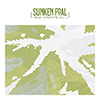 Truthfully, i don’t really know how Dunk Murphy does it. His work as Sunken Foal is some of the best and most consistently brilliant stuff i’ve heard from anyone over the last few years. Trying to describe it is a little difficult: on the one hand it has a distinctly electronic veneer, like visuals created from CGI, but is littered with such a plethora of acoustic sources that simply calling it ‘electronica’ seems rather to miss the point. Having said that, this third Friday Syndrome volume—arguably the best so far—places its beat and bass credentials centre stage from the outset, setting up heavyweight loops with equally hefty basslines. Everything, though, is completely agile, and this extends to the musical structures themselves, which, as ever, feel spontaneous and improvisational. And, it has to be said, the production values are simply amazing, another characteristic of every Sunken Foal release that only makes them even more breathtaking. [Countersunk]
Truthfully, i don’t really know how Dunk Murphy does it. His work as Sunken Foal is some of the best and most consistently brilliant stuff i’ve heard from anyone over the last few years. Trying to describe it is a little difficult: on the one hand it has a distinctly electronic veneer, like visuals created from CGI, but is littered with such a plethora of acoustic sources that simply calling it ‘electronica’ seems rather to miss the point. Having said that, this third Friday Syndrome volume—arguably the best so far—places its beat and bass credentials centre stage from the outset, setting up heavyweight loops with equally hefty basslines. Everything, though, is completely agile, and this extends to the musical structures themselves, which, as ever, feel spontaneous and improvisational. And, it has to be said, the production values are simply amazing, another characteristic of every Sunken Foal release that only makes them even more breathtaking. [Countersunk]
11 | Syl Kougaï – IXOYE
 “I like to make my sounds speak, sing, cry, scream. I like them to transform, so the bird becomes violin and the violin becomes sword.” This approach to sound explains in part the aural subtlety of ΙΧΘΥΣ, an album rooted in reinvented versions of various dance music tropes. Beats for Syl Kougaï come to represent an intricate grid, an anchor and a place of demarcation over which any number of continually evolving soundshapes are placed. In this context one’s aural focus keeps leaping between one and the other, between lines and curves, pitchless percussion and tonally-charged cloud formations, affirmative regularity and nebulous matter. Sometimes Kougaï allows one or the other to predominate, but overall it’s the tension between opposites that makes ΙΧΘΥΣ the marvel that it is. [Hymen]
“I like to make my sounds speak, sing, cry, scream. I like them to transform, so the bird becomes violin and the violin becomes sword.” This approach to sound explains in part the aural subtlety of ΙΧΘΥΣ, an album rooted in reinvented versions of various dance music tropes. Beats for Syl Kougaï come to represent an intricate grid, an anchor and a place of demarcation over which any number of continually evolving soundshapes are placed. In this context one’s aural focus keeps leaping between one and the other, between lines and curves, pitchless percussion and tonally-charged cloud formations, affirmative regularity and nebulous matter. Sometimes Kougaï allows one or the other to predominate, but overall it’s the tension between opposites that makes ΙΧΘΥΣ the marvel that it is. [Hymen]
10 | Disasterpeace – It Follows (Original Motion Picture Soundtrack)
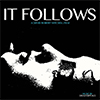 Considering how much It Follows avoids the bland predictability of contemporary horror cinema, it’s reasonable that its soundtrack should do the same. Richard Vreeland has turned away from his more familiar world of chiptune to create a dark and foreboding litany of miniatures that perfectly align with the movie’s lingering sense of dread. In a way not dissimilar to Rob’s score for the remake of Maniac, Vreeland’s music often speaks with a tone of voice that brings to mind ’70s and ’80s paradigms but which nonetheless sounds reassuringly of the here and now. Despite their brief individual durations (typically lasting between one and three minutes), each piece works as an impressively detailed micro-composition, highly dramatic small-scale narratives that, when taken as a whole—comprising nearly three-quarters-of-an-hour—form a tangled web of interconnected ideas that leave one feeling deeply troubled. Of this year’s non-orchestral soundtracks, Disasterpeace’s It Follows is by far the best. [Disasterpeace]
Considering how much It Follows avoids the bland predictability of contemporary horror cinema, it’s reasonable that its soundtrack should do the same. Richard Vreeland has turned away from his more familiar world of chiptune to create a dark and foreboding litany of miniatures that perfectly align with the movie’s lingering sense of dread. In a way not dissimilar to Rob’s score for the remake of Maniac, Vreeland’s music often speaks with a tone of voice that brings to mind ’70s and ’80s paradigms but which nonetheless sounds reassuringly of the here and now. Despite their brief individual durations (typically lasting between one and three minutes), each piece works as an impressively detailed micro-composition, highly dramatic small-scale narratives that, when taken as a whole—comprising nearly three-quarters-of-an-hour—form a tangled web of interconnected ideas that leave one feeling deeply troubled. Of this year’s non-orchestral soundtracks, Disasterpeace’s It Follows is by far the best. [Disasterpeace]
9 | Kenneth Kirschner – Compressions & Rarefactions
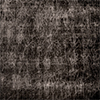 “Despite the apparent passivity of his material, Kirschner imbues it with rich, subtle variegations particularly with regard to timbre and register. […] Three of the works […] are part of a distinct line of enquiry evoking the soundworld of chamber music. However, these evocations are placed within a seemingly blank ambiance—at once intimate and infinite—that envelopes their imagined occupants in uncanny shadow. These works exhibit something of the ‘steady state’ environment typical of much of Kirschner’s music [… Their] disparate ideas and approaches betray the extravagance and courage of Kirschner’s imagination, which finds an especially sublime expression in July 17, 2010. Despite the work’s epic duration—its sense of momentum could best be described as ‘tectonic’—Kirschner encrusts its surface with a bewildering amount of detail. Metallic and glass sounds are reinvented into complex networks of bells, stones, insect calls, luminescent clouds and granular fabrics, coloured by semi-submerged pitches and dusted with glitter. And here, perhaps, is the most telling paradox of all: that, enclosed in the midst of such sonic elation, a work lasting over two hours has never seemed less daunting.” (from my liner notes) [12k]
“Despite the apparent passivity of his material, Kirschner imbues it with rich, subtle variegations particularly with regard to timbre and register. […] Three of the works […] are part of a distinct line of enquiry evoking the soundworld of chamber music. However, these evocations are placed within a seemingly blank ambiance—at once intimate and infinite—that envelopes their imagined occupants in uncanny shadow. These works exhibit something of the ‘steady state’ environment typical of much of Kirschner’s music [… Their] disparate ideas and approaches betray the extravagance and courage of Kirschner’s imagination, which finds an especially sublime expression in July 17, 2010. Despite the work’s epic duration—its sense of momentum could best be described as ‘tectonic’—Kirschner encrusts its surface with a bewildering amount of detail. Metallic and glass sounds are reinvented into complex networks of bells, stones, insect calls, luminescent clouds and granular fabrics, coloured by semi-submerged pitches and dusted with glitter. And here, perhaps, is the most telling paradox of all: that, enclosed in the midst of such sonic elation, a work lasting over two hours has never seemed less daunting.” (from my liner notes) [12k]
8 | Monty Adkins – Unfurling Streams
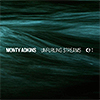 “… the point of inspiration (for both images and music) is the final two lines of poem no. 10 from E. E. Cummings’ 1958 collection 95 Poems: “For whatever we lose(like a you or a me) / it’s always ourselves we find in the sea”. Far from being the cue for sounds either directly recorded from or alluding to the machinations of waves, tides and the like, Adkins instead opts for a more abstract engagement, creating a sextet of canvasses that are characterised by a sense of fluidity, or buoyancy. There’s no idle float or drift here, materials are purposefully moved so as to produce particular moments of coalescence, or to underpin a moment of structural importance, or to reinforce something hitherto only implied. […] The considerable amounts of drama that ensue (Adkins’ sense of timing is just immaculate) easily finds its equal in the remarkable collection of 12 images created by Stephen Harvey (who, it should be stressed, is also a composer). Although more aquatically referential, they, too, are sufficiently abstracted that in most cases they go way beyond mere representation; Harvey’s concern is “to investigate detail and particularity and make it the essence of the work”. The images are a triumph in which familiarity is made new, even (at first) alien: complex refractive latticework, swirling clouds of impossible perspective, pools of something molten encrusted with jewels, these are all among the delights to be found in Harvey’s gorgeous, immersive images”. (reviewed in April) [Crónica]
“… the point of inspiration (for both images and music) is the final two lines of poem no. 10 from E. E. Cummings’ 1958 collection 95 Poems: “For whatever we lose(like a you or a me) / it’s always ourselves we find in the sea”. Far from being the cue for sounds either directly recorded from or alluding to the machinations of waves, tides and the like, Adkins instead opts for a more abstract engagement, creating a sextet of canvasses that are characterised by a sense of fluidity, or buoyancy. There’s no idle float or drift here, materials are purposefully moved so as to produce particular moments of coalescence, or to underpin a moment of structural importance, or to reinforce something hitherto only implied. […] The considerable amounts of drama that ensue (Adkins’ sense of timing is just immaculate) easily finds its equal in the remarkable collection of 12 images created by Stephen Harvey (who, it should be stressed, is also a composer). Although more aquatically referential, they, too, are sufficiently abstracted that in most cases they go way beyond mere representation; Harvey’s concern is “to investigate detail and particularity and make it the essence of the work”. The images are a triumph in which familiarity is made new, even (at first) alien: complex refractive latticework, swirling clouds of impossible perspective, pools of something molten encrusted with jewels, these are all among the delights to be found in Harvey’s gorgeous, immersive images”. (reviewed in April) [Crónica]
7 | Veli-Matti Puumala – Anna Liisa
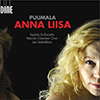 “… one of the most harrowing and hard-hitting operatic works i’ve encountered in as long as i can remember. The story (based on the play by Minna Canth) centres on the eponymous character whose life is abruptly plunged into disarray when a horrendous act of youthful impetuosity—infanticide following a fling with the local farmhand—is suddenly made centre-stage in her life again; said farmhand threatens Anna Liisa with her crime being made public unless she leave her fiancé and marry him. The opera similarly passes from the lightest of playful cheerfulness through some initial portents of doom, which don’t always sound apocalyptic […] Anna Liisa’s emotional writhing is, in the best sense, unpleasantly palpable, heightened through heartfelt scenes of intimate conversation and solitary soul-searching. Puumala’s musical language is lyrical and harmonically fluid—melody is of uppermost importance, use of extended techniques is essentially absent (and all the better for it)—turning this difficult and extremely painful story into an extended song of utter despair matched by indefatigable determination […] both guiding and being guided by its tortuous contours, climaxing in an amazing octet radiating pain, its fin-de-siècle tone conveying the truth that, whatever happens next, nothing will ever be the same again.” (reviewed in September) [Amazon]
“… one of the most harrowing and hard-hitting operatic works i’ve encountered in as long as i can remember. The story (based on the play by Minna Canth) centres on the eponymous character whose life is abruptly plunged into disarray when a horrendous act of youthful impetuosity—infanticide following a fling with the local farmhand—is suddenly made centre-stage in her life again; said farmhand threatens Anna Liisa with her crime being made public unless she leave her fiancé and marry him. The opera similarly passes from the lightest of playful cheerfulness through some initial portents of doom, which don’t always sound apocalyptic […] Anna Liisa’s emotional writhing is, in the best sense, unpleasantly palpable, heightened through heartfelt scenes of intimate conversation and solitary soul-searching. Puumala’s musical language is lyrical and harmonically fluid—melody is of uppermost importance, use of extended techniques is essentially absent (and all the better for it)—turning this difficult and extremely painful story into an extended song of utter despair matched by indefatigable determination […] both guiding and being guided by its tortuous contours, climaxing in an amazing octet radiating pain, its fin-de-siècle tone conveying the truth that, whatever happens next, nothing will ever be the same again.” (reviewed in September) [Amazon]
6 | John Williams – Star Wars: The Force Awakens (Original Motion Picture Soundtrack)
 SPOILER ALERT: Those who haven’t yet seen the film may wish to skip this paragraph until they have…
SPOILER ALERT: Those who haven’t yet seen the film may wish to skip this paragraph until they have…
When John Williams turns to Star Wars—his most familiar and productive cinematic habitat, the previous six films yielding almost 10 hours of released music—the result is never just a score, but a convoluted, tone poetic response to one of cinema’s most archetypal stories. Williams is often described as a ‘thematic’ composer, and as The Force Awakens is a continuation of an existing narrative, it’s reasonable to assume that associated themes and ideas already established will return. Sure enough, the Force theme—never, it should be remembered, Luke’s theme—makes its presence felt, as does Leia’s theme; but there’s virtually no trace of the Imperial March (the Empire having collapsed and been replaced)—which, in any case, was always subtitled “Darth Vader’s Theme”, a character no longer with us. Story-wise, the situation here is to no small extent nascent, lacking stability or surety, and in Williams’ score this finds correlation in music that avoids extended themes in favour of highly gestural behaviour, almost as though it was going through a pupal stage. Ultimately, Williams is first and foremost a motivic composer, and it’s this that predominates The Force Awakens; distinct new ideas emerge for the characters of Rey, Kylo Ren and the mysterious Snoke (a choir of basso profondos!), all fashioned from brief motifs which Williams weaves into highly convoluted counterpoint (at one point, in ‘March of the Resistance’, even launching into a fugato episode). Music in an apparently constant state of development, it’s among his most fascinating work, typified as always by wonderful orchestration and trenchant contrasts between overwhelming, full-force tuttis and intimate, small-scale, lyrical interludes, placing equal emphasis on the states of the characters as on their actions. It’s an exhilarating, moving, goosebump-inducing symphonic workout from Hollywood’s absolute finest. [Amazon]
5 | Volker Hennes – Emperor Ambassador
 “The principal is relatively simple, an exciter traversing the surface of a variety of drumheads, repeated numerous times and the subsequent recordings then superimposed on each other. This doesn’t in any way prepare you for the, frankly, incredible results, sounding akin to a huge array of brass instruments improvising at length through an extended sequence of vibrations and pulsations. A sense of coherence is strong, these entirely imaginary ‘instruments’ guided by Hennes into vast slabs of constantly-changing colouration and texture, sometimes bearing all the hallmarks of a direct assault, elsewhere dissolving into spacious dronal episodes of near-stasis, and even a strange kind of gruff dialogue between alien strings and woodwind. Throughout, timbral qualities are nicely ambiguous, at the cusp of sounding acoustic or electronic, reinforced by the untempered nature of its pitch relationships, and there’s a fitting sense of tension permeating everything, suggesting that at any moment the entire music could tilt on its axis into something utterly different. Genuinely some of the most exciting and beautiful music i’ve ever heard.” (reviewed in September) [Entr’acte]
“The principal is relatively simple, an exciter traversing the surface of a variety of drumheads, repeated numerous times and the subsequent recordings then superimposed on each other. This doesn’t in any way prepare you for the, frankly, incredible results, sounding akin to a huge array of brass instruments improvising at length through an extended sequence of vibrations and pulsations. A sense of coherence is strong, these entirely imaginary ‘instruments’ guided by Hennes into vast slabs of constantly-changing colouration and texture, sometimes bearing all the hallmarks of a direct assault, elsewhere dissolving into spacious dronal episodes of near-stasis, and even a strange kind of gruff dialogue between alien strings and woodwind. Throughout, timbral qualities are nicely ambiguous, at the cusp of sounding acoustic or electronic, reinforced by the untempered nature of its pitch relationships, and there’s a fitting sense of tension permeating everything, suggesting that at any moment the entire music could tilt on its axis into something utterly different. Genuinely some of the most exciting and beautiful music i’ve ever heard.” (reviewed in September) [Entr’acte]
4 | Autechre – AE_LIVE
 Nine unique pieces, or one piece rendered nine different ways? That’s the question that repeatedly rears its head through the nine hour-long live performances presented in AE_LIVE. It’s a question that comes at the end of a line of enquiry first properly explored by the duo a decade ago, back on Untilted. i’ve long felt that some of Autechre’s finest moments are captured on Untilted, specifically the longer-form evolutionary type of compositional practice that they first began to perfect there. Ten years on, there’s a distinct sense of these pieces being variations on a theme—or, at least, on a method. Using a similar timbral palette throughout, the music is all essentially unpitched—what pitches there are act as a garnish, and even the basslines are so serpentine that they transcend all conventional notions of that term—focusing almost entirely on beat patterns, subjected to endless varieties of evolution and expansion, at times but by no means often underpinned by a steady and broadly four-square pulse, with numerous episodes of repose/relaxation interspersed among the more hectic beatwork. Nothing this year has begged the questions concerning generative material bigger. There’s a constant sense of hearing new ideas for the first time—and this is of course true and false, both within each piece itself as well as within the larger group; but it’s a testament to the unstoppable stream of continuous reinvention that typifies and embodies every moment of AE_LIVE. [Warp]
Nine unique pieces, or one piece rendered nine different ways? That’s the question that repeatedly rears its head through the nine hour-long live performances presented in AE_LIVE. It’s a question that comes at the end of a line of enquiry first properly explored by the duo a decade ago, back on Untilted. i’ve long felt that some of Autechre’s finest moments are captured on Untilted, specifically the longer-form evolutionary type of compositional practice that they first began to perfect there. Ten years on, there’s a distinct sense of these pieces being variations on a theme—or, at least, on a method. Using a similar timbral palette throughout, the music is all essentially unpitched—what pitches there are act as a garnish, and even the basslines are so serpentine that they transcend all conventional notions of that term—focusing almost entirely on beat patterns, subjected to endless varieties of evolution and expansion, at times but by no means often underpinned by a steady and broadly four-square pulse, with numerous episodes of repose/relaxation interspersed among the more hectic beatwork. Nothing this year has begged the questions concerning generative material bigger. There’s a constant sense of hearing new ideas for the first time—and this is of course true and false, both within each piece itself as well as within the larger group; but it’s a testament to the unstoppable stream of continuous reinvention that typifies and embodies every moment of AE_LIVE. [Warp]
3 | Mark Andre – … auf …
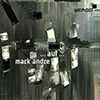 “There’s actually something rather brazen about the piece, Andre rooting it in what is essentially a language of gesture. There aren’t many of them either: huge tutti accents, loud crescendo chords, gentle sustained pitches and extremely soft percussive textures comprise pretty much everything that we hear. Andre makes them the poles of an intense drama played out (in three pieces, both independent and parts of a trilogy) for over an hour, yet which never for a moment seems to tread water. Which isn’t to suggest that it’s relentless; on the contrary, a great deal of the tension arises from protracted periods of semi-stasis; for some composers these would be times of repose, but in … auf … the orchestra feels poised; energy and activity are implicit everywhere. Furthermore, the accents—which, due both to the actual dynamic but also to their contextual contrast, are on occasions exceptionally loud (the hammer blows of Mahler 6 meet the opening of Mahler 1)—do nothing whatsoever to dispel or release this pent-up energy, if anything injecting still more, acts of blunt force provocation like a boxer hitting their own face before a fight. Andre moves back and forth between these gestural poles in a way that sounds inherently chaotic yet—Takemitsu-like—each step forward is entirely convincing.” (reviewed in March) [Amazon]
“There’s actually something rather brazen about the piece, Andre rooting it in what is essentially a language of gesture. There aren’t many of them either: huge tutti accents, loud crescendo chords, gentle sustained pitches and extremely soft percussive textures comprise pretty much everything that we hear. Andre makes them the poles of an intense drama played out (in three pieces, both independent and parts of a trilogy) for over an hour, yet which never for a moment seems to tread water. Which isn’t to suggest that it’s relentless; on the contrary, a great deal of the tension arises from protracted periods of semi-stasis; for some composers these would be times of repose, but in … auf … the orchestra feels poised; energy and activity are implicit everywhere. Furthermore, the accents—which, due both to the actual dynamic but also to their contextual contrast, are on occasions exceptionally loud (the hammer blows of Mahler 6 meet the opening of Mahler 1)—do nothing whatsoever to dispel or release this pent-up energy, if anything injecting still more, acts of blunt force provocation like a boxer hitting their own face before a fight. Andre moves back and forth between these gestural poles in a way that sounds inherently chaotic yet—Takemitsu-like—each step forward is entirely convincing.” (reviewed in March) [Amazon]
2 | John Wall & Alex Rodgers – Work 2011–2014
 “A single piece lasting 27½ minutes, it establishes a profoundly intimate sensibility at the outset, Rodgers’ words practically being spoken directly into one’s mind. The context Wall fashions for them is typically restrained, soft and low but full of impact, his electronic sounds projected into high and low bandwidths more than anywhere else. When he’s manipulating materials like this, the results are simply beautiful, but when he pushes them outward, lets them grow, sharpens their edges, it’s just heart-stopping. The nature of the interaction between Wall and Rodgers, as it was in their previous collaboration Work 2006–2011 […] is deeply enigmatic; Rodgers is often low in the mix, audible but not intelligible, and when he is suddenly exposed, his stream of consciousness—kind of like Tourette poetry—feels urgent, insistent, all the more so for being constantly tinged with fiery emotional subtext. It’s a paradox that continues even when the text is delivered by an entirely synthetic voice, its vicious expletive-strewn phrases like robotic piranha in a viscous sonic ooze. The diverse means of expression demonstrated here are disconcertingly imaginative, almost intimidating so; Wall has an innate sense of shaping music that’s simultaneously abstract yet capable of sledgehammer-like emotive blows. The closing gambit, in which Rodgers voice somehow becomes embedded within Walls’ materials, is utterly remarkable.” (reviewed in March) [Entr’acte]
“A single piece lasting 27½ minutes, it establishes a profoundly intimate sensibility at the outset, Rodgers’ words practically being spoken directly into one’s mind. The context Wall fashions for them is typically restrained, soft and low but full of impact, his electronic sounds projected into high and low bandwidths more than anywhere else. When he’s manipulating materials like this, the results are simply beautiful, but when he pushes them outward, lets them grow, sharpens their edges, it’s just heart-stopping. The nature of the interaction between Wall and Rodgers, as it was in their previous collaboration Work 2006–2011 […] is deeply enigmatic; Rodgers is often low in the mix, audible but not intelligible, and when he is suddenly exposed, his stream of consciousness—kind of like Tourette poetry—feels urgent, insistent, all the more so for being constantly tinged with fiery emotional subtext. It’s a paradox that continues even when the text is delivered by an entirely synthetic voice, its vicious expletive-strewn phrases like robotic piranha in a viscous sonic ooze. The diverse means of expression demonstrated here are disconcertingly imaginative, almost intimidating so; Wall has an innate sense of shaping music that’s simultaneously abstract yet capable of sledgehammer-like emotive blows. The closing gambit, in which Rodgers voice somehow becomes embedded within Walls’ materials, is utterly remarkable.” (reviewed in March) [Entr’acte]

1 | Susanne Sundfør – Ten Love Songs
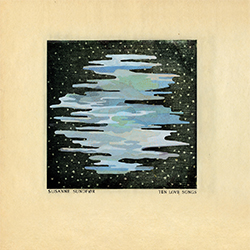 As a composer, i tend to avoid looking at scores of compositions i love most. i could explain that away by saying every composer worth their salt should be able—as i was memorably told many years ago—to “see with their ears”, but it’s more to do with the simple fact that i like the mystery to remain, i like my imagination to grapple with what may or may not actually be going on. And as a writer, there’s a parallel experience; the music that grabs me most forcefully, and with which my head and heart become most inextricably entwined, i’d prefer not to write about: the act of having to articulate things seems at best inadequate, and at worst, perhaps a little indecent. So i’m going to have to get a little indecent—and more than a little inadequate—in turning to my runaway album of the year, Susanne Sundfør‘s Ten Love Songs.
As a composer, i tend to avoid looking at scores of compositions i love most. i could explain that away by saying every composer worth their salt should be able—as i was memorably told many years ago—to “see with their ears”, but it’s more to do with the simple fact that i like the mystery to remain, i like my imagination to grapple with what may or may not actually be going on. And as a writer, there’s a parallel experience; the music that grabs me most forcefully, and with which my head and heart become most inextricably entwined, i’d prefer not to write about: the act of having to articulate things seems at best inadequate, and at worst, perhaps a little indecent. So i’m going to have to get a little indecent—and more than a little inadequate—in turning to my runaway album of the year, Susanne Sundfør‘s Ten Love Songs.
The album is essentially a 46-minute, ten-movement song cycle, approaching its subject from a number of distinct angles, but beginning from a place of sobriety, as reality punctures the balloon of romance: “We thought love could change our names | And free us from our earthly chains | Oh you wanted to believe in this, to believe in this | But they couldn’t | We wanted to believe that love | Could lift us to the skies and above | But they wouldn’t”. Opening song ‘Darlings’ unfolds this message like a hymn rising into the ascendent, from a humble lone harmonium to an increasingly huge, transcendent organ and choir accompaniment, a representation of sorts of the (mis-)beliefs carried by the words, and a solemn prelude for the rest of the album to come. i’m not going to go through the remaining nine songs in detail, but that same sense of multiple meanings and acute attention to detail is present in every one of them. Love’s ability’s to incite and/or obscure violence occurs on several occasions; ‘Accelerate’, cast as a dark synthpop number, looks at it from a seemingly masochistic angle, its machinations finding an analogue in a faux-Baroque organ instrumental; ‘Delirious’, something of a sibling track, assumes a slightly more playful aspect where “love” is turned into an aloof game “Done with intent | Without repent”, although with a worrying closing observation: “You say that I’m delirious | But I’m not the one holding the gun”. These portents become truly murderous in ‘Silencer’, the Beloved regarding her recently deceased Lover: “Here I stand with the gun in my hand | Waiting for the water to calm … Your cries and your curses | Could not protrude | From the bottom of a | Suburban swimming pool”. These black words are expressed alongside the most gentle, idyllic guitar you could ever hear (like a Eurovision song from the 1960s), building to a high point of synth-fuelled orgasmic rapture, and this extreme disjunct between what is said and how it is said—the two often directly opposed to each other—epitomises the expressive power of Ten Love Songs.
Not all of Sundfør’s songs are as extreme as these; in fact, the majority are concerned with more relatable instances of longing and loneliness, and the inevitable frustrations arising from each. The harmonium returns in the simplest of them, ‘Trust Me’, another hymn-like composition bewailing the difficulties of a drug-addled paramour. ‘Fade Away’—a song that literally makes me cry every time i listen to it—creates an increasingly ecstatic environment for a song confronting a relationship of mutual desire yet which seems destined—or doomed—to drift and disappear (one lovely moment that reinforces the song’s implicit domesticity: a microwave oven ping triggering the start of the middle 8). The situation is exacerbated in ‘Kamikaze’, where the Beloved reflects on how destructive they are for the Lover, who despite everything continues to take them back; the oft-sung refrain—”’cause you take me back | You take me back | I’m your kamikaze”—becomes increasingly heartbreaking, sounding simultaneously desperate and incredulous, testifying to the ridiculous decisions we make in the name of “love”, decisions we convince ourselves are either inevitable or outside our power to determine. Throughout the album, there’s a plethora of hints of earlier musics, and here there’s just the barest intimation of ABBA (who famously confronted their own relationship issues in their work)—again, a paradoxically upbeat context for words that commune nothing but disaster and heartbreak, but one that again seeks solace in Baroque gestures, concluding in a lengthy harpsichord rumination. In the 10-minute ‘Memorial’—Sundfør now drawing on the power ballad for moral support—its internal reverie finds articulation through an impromptu burst of piano concerto, the centerpiece of a song both indignant of the Lover’s treatment (“Even now I know you are heartless | ’cause you took off my dress | And you never put it on again”) yet clinging without hope to the idea of rekindling something: “You won’t come back again | Even if the world should end | Still I would never let | Anybody else come in”.
Love is never easy, which means that even the album’s more emotionally buoyant moments betray signs of anxiety. In the otherwise intimate and erotically-charged ‘Slowly’, the Beloved’s attentions on the Lover are flecked with a damaged inner monologue: “And you say it’s gonna last forever | We have different heartbeats | But all the same heartbreak”. Another gently rock-infused ballad, it finds some consolation in focusing on the moment—which is, perhaps, better than nothing. Better still, though, is the album’s discombobulating coda, ‘Insects’, where the two darlings finally throw off the restraints of their human frailments in a massive floor-stomping electronica dervish; it may well be a dance of death, but they’ll at least go out in a thundering of unbridled joy: love in extremis.
It is an incredibly rare experience, to listen to an album unfold, track by track, and realise that each and every one of them is quite simply jaw-droppingly brilliant. It happened just once this year—but with music as amazingly imaginative and emotionally potent as this, once is enough.
[Amazon]

[…] 5:4 Best Albums of 2015 In the Light of Air http://5against4.com/2015/12/31/best-albums-of-2015-part-2/ […]